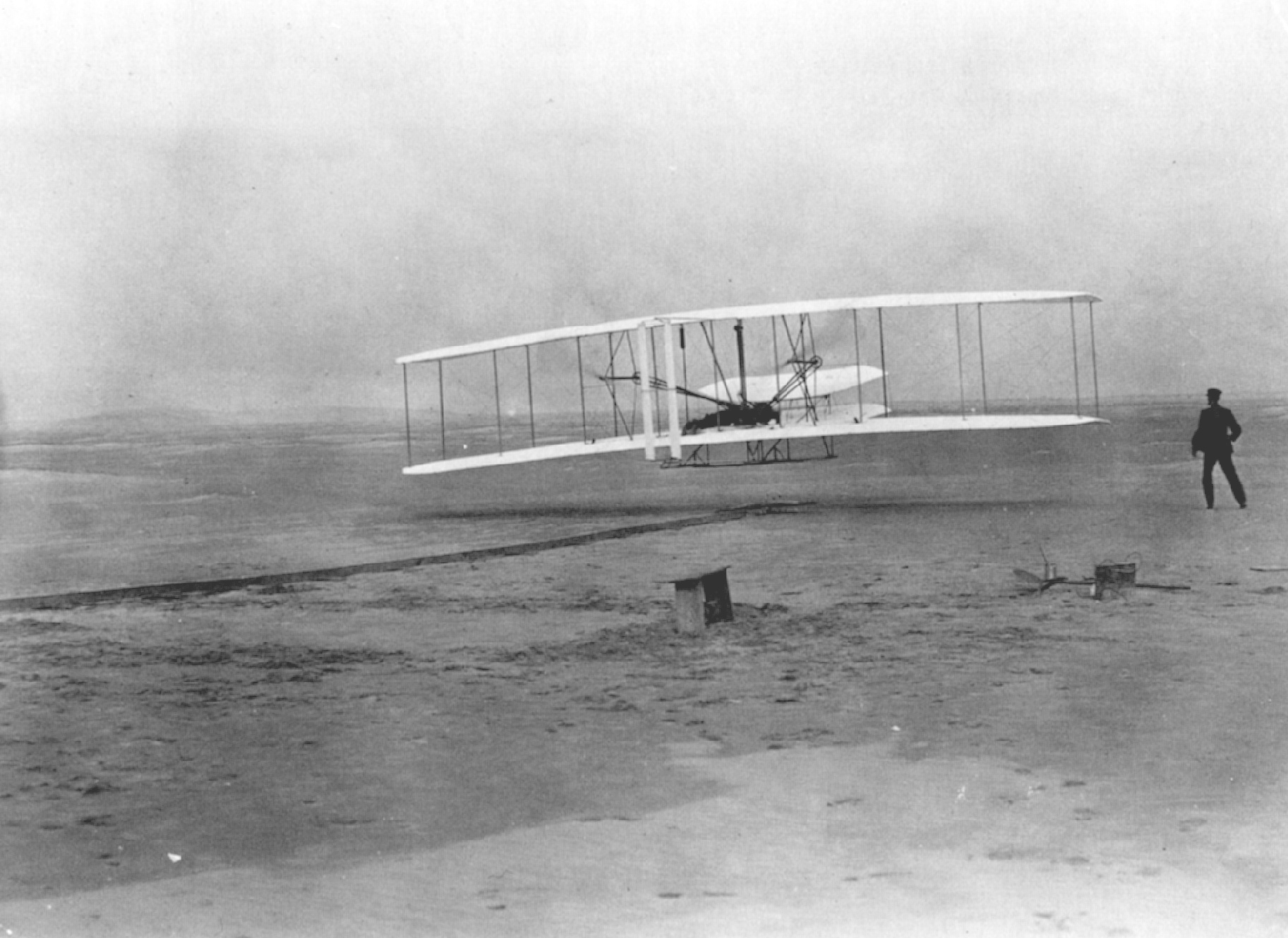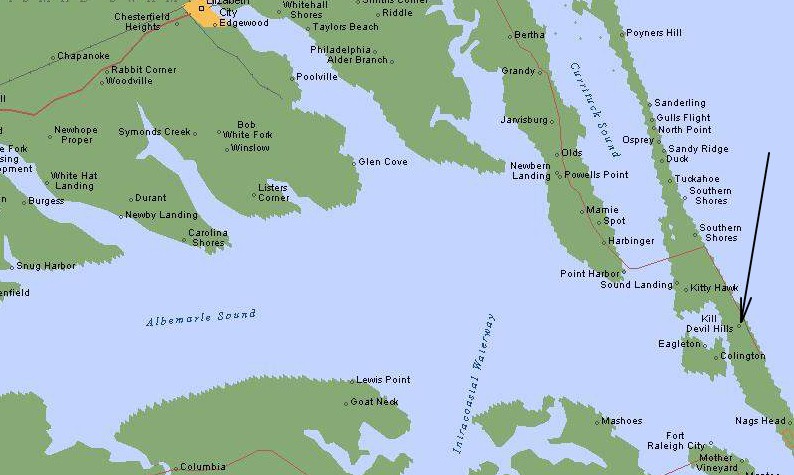Most people think that Wilbur and Orville Wright were the
first to build and fly an aircraft. They were not.
They were the first to invent aircraft controls that made
mechanical fixed wing flight possible. Even their U.S.
patent (#821,393) does not claim airplanes in general,
but rather claims airplanes that are controlled by what
were later termed "ailerons".
The brothers' fundamental breakthrough was their invention
of "three axis-control," which enabled the pilot to steer
the aircraft effectively and to maintain its equilibrium.
This method became standard on fixed wing aircraft of all
kinds. From the beginning of their aeronautical work, they
focused on unlocking the secrets of control to conquer
"the flying problem," rather than developing more powerful
engines as some other experimenters did.
They actually built a wind tunnel to test their models and
produced better aeronautical data, enabling them to design
and build wings and propellers more effective than any
before.
They gained the mechanical skills essential for their
success by working for years in their bicycle shop with
printing presses, bicycles, motors, and other machinery.
Their work with bicycles in particular influenced their
belief that an unstable vehicle like a flying machine
could be controlled and balanced with practice.
Because they were not the first to build and fly an
airplane, their status as inventors of the airplane has
been subject to counter-claims by various parties. Much
controversy persists over the many competing claims of
early aviators.
On December 17, 1903, they made four flights at Kitty Hawk,
North Carolina. The best flight covered 852 feet (48 feet
less than the distance between end zones on a football
field) in 59 seconds (about twice the time it takes a
football player to run it.) It was the first
heavier-than-air, powered aircraft to make a sustained,
controlled flight with a pilot aboard.
They used their proven canard biplane configuration which
was rooted in their initial 1899 kite design. Key to the
Flyer's success was its three-axis control system, which
featured a moveable rudder for side-to-side control (Yaw),
an elevator for up/down (pitch) control, and wing-warping
for lateral balance (roll). The right wing was four inches
longer than the left to compensate for the engine being
mounted to the right of the pilot. The wings were rigged
with a slight droop to reduce the effects of crosswinds.
The plane is now on permanent display in the Smithsonean,
in Washington, D.C., a gift of the Estate of Orville Wright.
|




